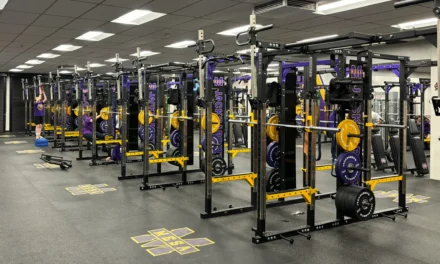Written by, Jeff Behrens, CMAA
Athletic Director, Pewaukee High School, Pewaukee, WI
Interscholastic athletic programs offer more than just competition and physical development; they shape the values and character of young people, leaving a lasting impact that extends well beyond the playing field. Core principles are central to this mission, providing a foundation upon which athletic programs can achieve meaningful success. However, these principles are only impactful if they are actively integrated into the culture and daily operations of an athletic department. Here are six essential strategies to bring your core principles to life, ensuring they resonate across every level of your program.
1. Define the Core Principles
The first step in creating a purpose-driven athletic program is defining its core principles. These principles should be developed through a collaborative process that involves key stakeholders, including coaches, administrators, and even student-athletes. By involving the broader community, you ensure buy-in and alignment with the values of the school district and its mission.
Core principles should be clear, actionable, and representative of the program’s goals. At Pewaukee High School, we have five core principles:
- Compete: Demonstrating passion, pride, enthusiasm, and toughness in athletic performance.
- Commit: Overcoming obstacles with dedication, perseverance, accountability, and resilience.
- Contribute: Enhancing the team through service, leadership, and teamwork.
- Care: Supporting others through empathy, reflection, and self-awareness.
- Connect: Building trust, respect, and meaningful relationships on and off the field.
We take it one step further by adding a definition for each principle. By defining these values, we establish a roadmap for both behavior and decision-making.
2. Incorporate Core Principles into the Mission and Vision
To ensure that core principles guide the program’s purpose, they must be embedded into its mission and vision statements. Pewaukee Athletics’ mission is straightforward: “Building better people through the athletic experience.” Our vision expands on this, stating:
“The Pewaukee Athletic Department strives to be a leader by shaping values and developing characteristics that promote lifelong excellence through athletic participation and competition. We will develop skills in our student-athletes to Compete, Commit, Contribute, Connect, and Care.”
Incorporating core principles into mission and vision statements ensures that these values are not abstract concepts but integral parts of the department’s identity. Every program, policy, and initiative should align with these guiding statements.
3. Communicate the Core Principles
Core principles can only influence your program if they are consistently communicated to all stakeholders. This includes athletes, coaches, parents, school staff, and the broader community. Communication should be multi-faceted and ongoing, employing tools such as:
- Newsletters and social media updates.
- Parent and team meetings.
- Signage displayed throughout facilities.
- Visitor guides and public-facing materials.
Branding is also a critical component of communication. At Pewaukee, we create a strong identity around our core principles, making them visible and relatable. This ensures they are not just words on paper but lived values.
4. Infuse Core Principles into the Athletic Department
Bringing principles to life means embedding them into every aspect of the athletic department. From coaching philosophies and training sessions to recruitment practices and end-of-season evaluations, the principles should influence every decision and interaction. Examples of practical implementation include:
- Athlete Recognition: Celebrating when athletes embody core principles such as leadership, sportsmanship, or perseverance.
- Surveys and Feedback: Evaluating how well the program fosters these values through regular assessments of athlete and coach experiences.
- Program Standards: Setting expectations for behavior, performance, and teamwork that align with core principles.
At Pewaukee, we’ve implemented systems to measure and recognize these values in action, ensuring that our principles are not just aspirational but actionable.
5. Align Professional Development with Core Principles
Professional development for coaches and staff is a key opportunity to reinforce core principles. Training sessions, workshops, and certifications should focus on building the skills necessary to model and teach these values effectively. For example, sessions might cover:
- Developing resilience and mental toughness in athletes.
- Strategies for fostering teamwork and leadership.
- Techniques for building trust and communication within teams.
Aligning professional development with core principles ensures that coaches and staff are well-equipped to embody and promote the values that define the athletic program.
6. Model Core Principles
Leadership by example is essential. Athletic administrators, coaches, and staff must consistently demonstrate the values they expect from their athletes. Modeling principles such as accountability, respect, and dedication sets the standard for behavior throughout the department.
Consistent actions reinforce your program’s values, creating a culture where principles are lived out daily. When administrators and coaches embody these values, they inspire athletes to follow suit, creating a ripple effect that strengthens the entire community.
Purpose-Based Athletics: The Pewaukee Approach
At Pewaukee High School, our purpose goes beyond winning games. While we aim to “plan, prepare, and play the game in pursuit of the win,” our ultimate mission is to build better people through athletics. By focusing on the skills and characteristics required to Compete, Commit, Contribute, Connect, and Care, we transform sport into an extension of the classroom, teaching life lessons such as perseverance, leadership, and empathy.
Our purpose-driven approach ensures that every athlete leaves the program not only as a better competitor but also as a more well-rounded individual prepared for lifelong success.
Final Thoughts
Living out core principles requires more than good intentions; it demands intentionality, consistency, and commitment. By defining, integrating, communicating, infusing, aligning, and modeling core principles, athletic administrators can create programs that not only achieve competitive success but also make a lasting impact on students and the broader community.
As athletic leaders, we have a unique opportunity to shape young lives. By bringing our core principles to life, we ensure that the lessons learned on the field translate into meaningful growth and excellence off the field. This is the true legacy of interscholastic athletics.










